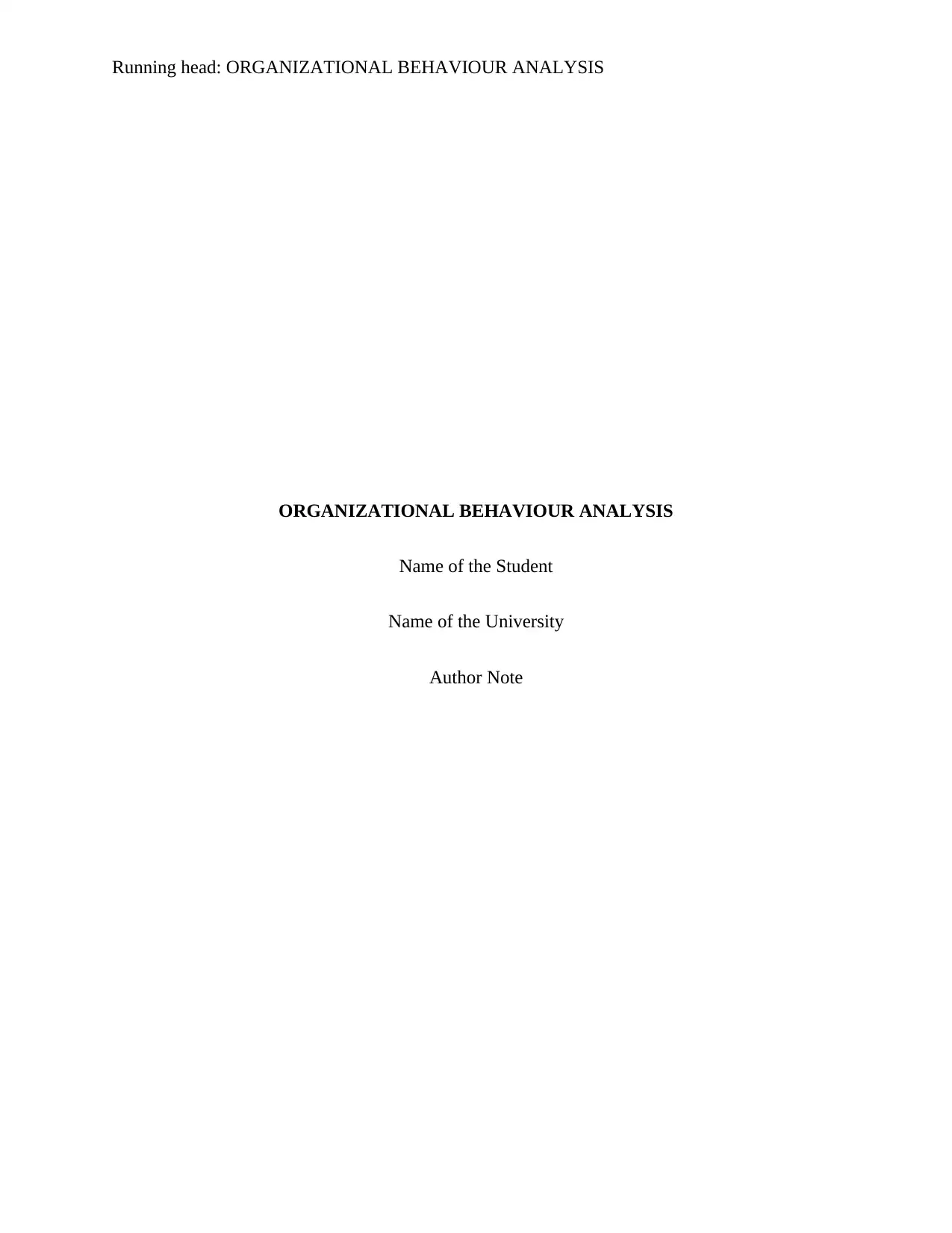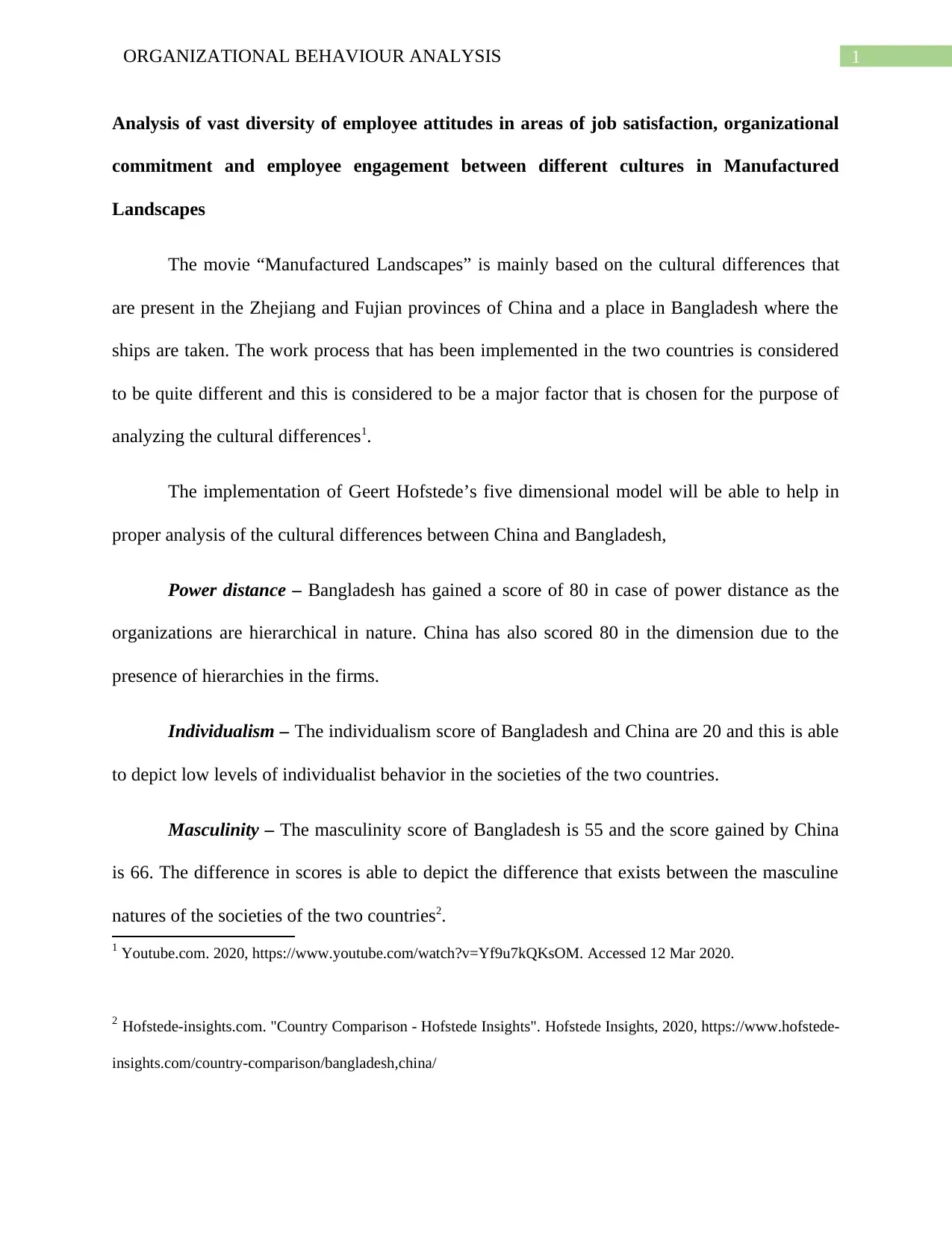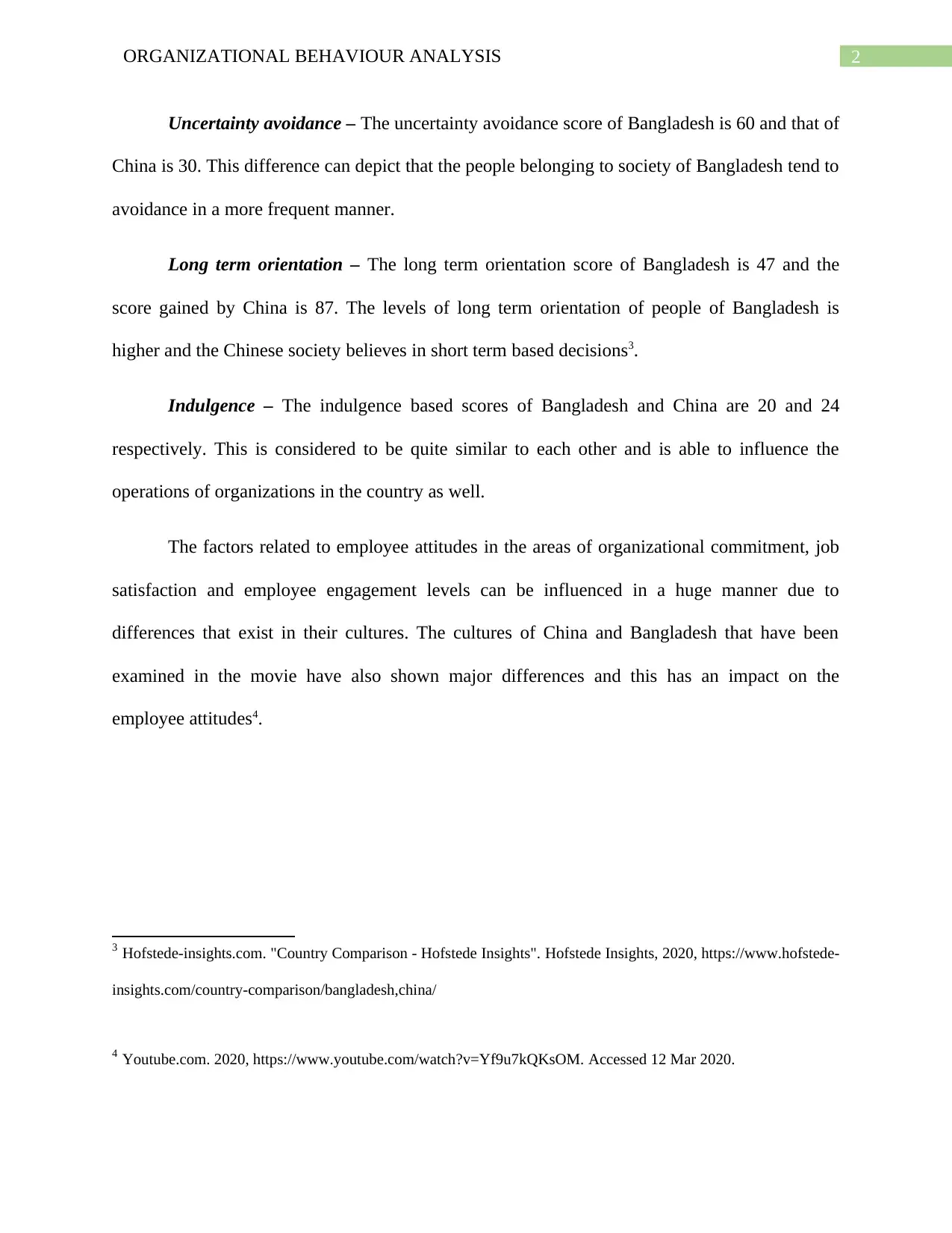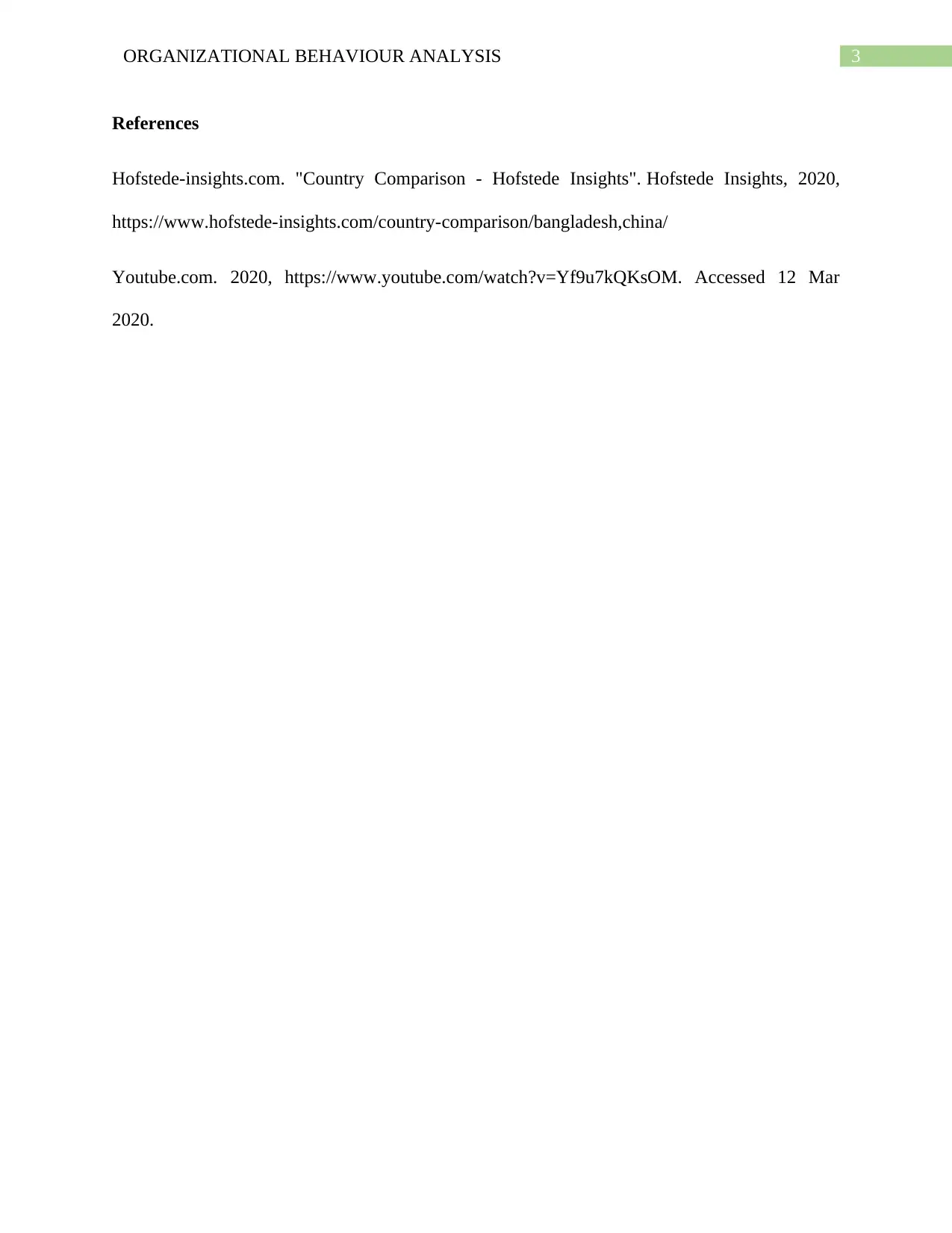Organizational Behaviour Analysis: Comparing Cultures Report
VerifiedAdded on 2022/08/21
|4
|488
|14
Report
AI Summary
This report provides an analysis of organizational behaviour, focusing on the cultural differences between China and Bangladesh, as depicted in the movie “Manufactured Landscapes.” The study applies Geert Hofstede’s five-dimensional model to compare the two countries, examining power distance, individualism, masculinity, uncertainty avoidance, and long-term orientation. The analysis highlights how these cultural dimensions influence employee attitudes, including organizational commitment, job satisfaction, and employee engagement. The report examines the scores of each country across the dimensions and explains how these differences affect workplace dynamics and the overall operational environment. By comparing these cultural aspects, the report aims to provide insights into the diverse factors that shape employee behaviour and organizational practices in different cultural contexts. The conclusion emphasizes the impact of these cultural differences on employee attitudes and organizational practices, highlighting the importance of understanding cultural nuances in a globalized business environment.
1 out of 4











![[object Object]](/_next/static/media/star-bottom.7253800d.svg)